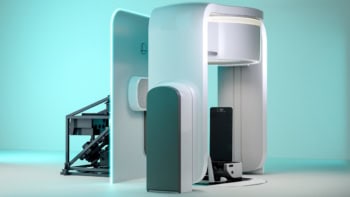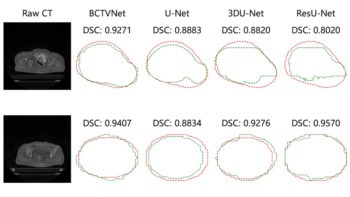
Researchers in France and Japan have developed a technique that not only reduces the size of a free electron laser (FEL) but also generates coherent light at X-ray wavelengths down to 32 nm for the first time. The technique, which involves seeding the laser with another light source, could be refined to produce fully-coherent pulses with wavelengths of 2–4 nm, opening up the “water window” crucial for studying biological samples.
Conventional lasers work by amplifying the radiation emitted when electrons move between certain energy levels in atoms or molecules. Things are different in an FEL: a beam of electrons is accelerated in a wavy, sinusoidal trajectory along a series of magnets collectively called an undulator. As the beam approaches the speed of light, the electrons emit spontaneous radiation known as synchrotron radiation.
The electrons are never fully detached from this synchrotron radiation — they interact and amplify it to produce self-amplified spontaneous emission (SASE) at a variety of wavelengths. The FEL can be tuned by changing the energy of the electrons and the position of the undulator’s magnets. However, this configuration presents a problem in that “spikes”, or fluctuating light pulses, appear at short wavelengths in the SASE temporal and spatial profiles. These spikes make it difficult to perform time-resolved experiments, which are important for many applications.
An external source
One solution to this problem is to seed the FEL with a coherent, external source. “The FEL properties are significantly improved because they reflect the coherent properties of the seed source,” team member Guillaume Lambert told physicsworld.com.
The method, which the researchers developed during experiments at the SPring-8 Compact SASE Source (SCSS) test accelerator in Japan, involves focusing intense infrared light from a titanium–sapphire laser onto a cell containing xenon gas. The “higher-order harmonic generation” (HHG) beam produced — the seed — is then refocused onto the FEL to produce light that is coherent in both space and time. This particular technique leads to a much more compact FEL source for generating light with wavelengths ranging from ultraviolet to X-rays: the undulator length is reduced from nine metres in a normal SASE configuration to just four metres (Nature Phys. doi:10.1038/nphys889).
“Compared to conventional synchrotron sources, FELs provide a high degree of temporal coherence, pulses that last just tens or hundreds of femtoseconds [10–13–10–14 s] and a ten-billion times higher peak brightness,” explains Toru Hara of the Japanese team. Synchrotron radiation is widely used in biology for determining the structure of proteins, whereas fourth-generation light sources, like this FEL, will allow protein function within cells to be observed. This is because the light produced is not absorbed by water, which allows cells to be observed.
At 160 nm, the seed has the shortest wavelength ever produced in such experiments — and non-linear harmonics are produced down to 32 nm. Moreover, the technique is the first demonstration of seeding an FEL device with HHG. Earlier seeding in FELs has been performed with conventional lasers at 10.6 µm (far infrared), 800 nm (infrared) and 266 nm (ultraviolet). The researchers are now planning to measure the wavefront of the light produced with a view to investigating its spatial properties, and later this year will try to seed at 50–60 nm.
The HHG seeding technique will be implemented shortly on the SPARC and FLASH FEL facilities in Italy and Germany, respectively.



